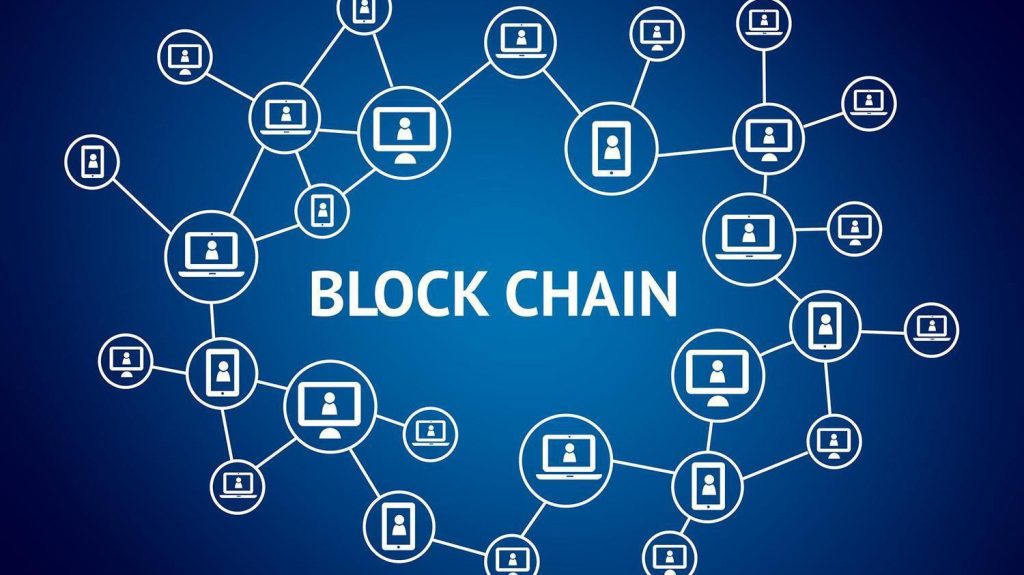Blockchain technology has received a considerable amount of attention in recent years, with its potential to revolutionize various industries and processes. However, despite its growing popularity, there are still many misconceptions and misunderstandings surrounding this innovative technology. In this article, we will debunk 07 common misconceptions about blockchain technology and provide a clearer understanding of its capabilities and limitations.
Blockchain and Bitcoin are not the same
One of the most common misconceptions about blockchain technology is that it is synonymous with Bitcoin. While blockchain was indeed introduced as the underlying technology behind Bitcoin, the two are not interchangeable. Bitcoin is a cryptocurrency that runs on blockchain technology, which is a distributed ledger system used to record and verify transactions.
Blockchain technology has since evolved to have various applications beyond digital currencies, including healthcare, supply chain management, and decentralized finance. It is important to note that while Bitcoin may be the most famous implementation of blockchain technology, it is just one among many.
Blockchain Misconceptions:
- Bitcoin is the only application of blockchain technology: As mentioned earlier, blockchain technology can be used for more than just cryptocurrencies. Thanks to its decentralized and secure nature, it has the potential to transform various industries such as healthcare, real estate, logistics, and more.
- Blockchain is exclusively used for financial systems: While blockchain technology has gained widespread recognition for its use in financial systems, it also has numerous other applications. For instance, it can be used for identity management, voting systems, supply chain management, and even intellectual property rights management.
- Bitcoin and blockchain are interchangeable: Some people use the terms “Bitcoin” and “blockchain” interchangeably, but they are two distinct entities. Bitcoin is a digital currency, while blockchain is the technology that enables its operation. It is essential to differentiate between the two to truly understand the potential of blockchain technology.

The Blockchain is not the same as Bitcoin
Blockchain is not inherently private
Another common misconception about blockchain technology is that it is entirely private and anonymous. While this may be true for some blockchains, others operate differently. Public blockchains, which are used for cryptocurrencies like Bitcoin and Ethereum, utilize public keys for transactions, keeping personal information separate. This means that while transactions are visible on the blockchain, they do not reveal the identities of those involved.
However, it should be noted that private blockchains exist, which provide varying levels of privacy. Organizations can use these private blockchains to limit access based on permissions, making them more suitable for confidential data management.
Blockchain Misconceptions:
- All blockchains are completely anonymous: While public blockchains may offer a certain degree of anonymity, it does not mean that all blockchains operate this way. Private blockchains can have varying levels of privacy, depending on their design and purpose.
- Transactions on the blockchain reveal personal information: As mentioned earlier, public blockchains only display public keys, which serve as pseudonyms for users. This means that while transactions are visible, they cannot be linked to individuals.
- Privacy is not a concern for blockchain technology: While blockchain technology offers many benefits, it also presents challenges when it comes to maintaining privacy. Developers and organizations must consider these challenges and implement appropriate measures to protect sensitive data.
Blockchain has uses beyond cryptocurrencies
As mentioned earlier, blockchain technology is not just limited to cryptocurrencies. It has evolved to have various other applications, including non-fungible tokens (NFTs), smart contracts, supply chain management, and decentralized finance (DeFi).
NFTs are unique digital assets that use blockchain technology to verify ownership, making them valuable for creators and collectors. Smart contracts, on the other hand, are self-executing contracts written in code that automatically executes when certain conditions are met. These can be used for various purposes, such as automating business processes or enabling autonomous financial transactions.
Supply chain management is another area where blockchain technology has immense potential. It allows for transparent and secure tracking of products throughout the supply chain, providing consumers and businesses with more visibility and trust. DeFi, on the other hand, leverages blockchain technology to enable decentralized financial services, such as lending, borrowing, and trading without intermediaries.
Blockchain Misconceptions:
- Blockchain technology is only relevant for cryptocurrencies. As discussed earlier, blockchain technology has many applications beyond cryptocurrencies, making it a versatile technology with numerous possibilities.
- NFTs are just digital art. While NFTs have gained attention for their use in selling digital artwork, they have many other potential uses, such as digital collectibles, gaming assets, and music rights management.
- Smart contracts have limited use cases. Smart contracts can be utilized in various industries and processes, including insurance, real estate, and supply chain management, to name a few.
- Supply chain management does not benefit from blockchain technology. Blockchain technology adds transparency and security to supply chains, making it a valuable tool for managing and tracking products.
- DeFi is just another form of cryptocurrency. While DeFi may operate using cryptocurrencies, its purpose is to offer decentralized financial services without intermediaries, setting it apart from traditional financial systems.

Blockchain can be cost-effective
Another misconception about blockchain technology is that it is too expensive, making it inaccessible for smaller organizations and businesses. While it is true that public blockchains, such as Bitcoin, require a significant amount of computing power to verify transactions, there are other options available.
Private and permissioned blockchains, for instance, can be more cost-effective than traditional systems. These blockchains do not require a large number of nodes to validate transactions, thus reducing the energy costs associated with mining on public blockchains. Additionally, private blockchains can also be designed to suit the specific needs of an organization, eliminating unnecessary features and keeping costs low.
Blockchain Misconceptions:
- Blockchain technology is too expensive for smaller organizations. While public blockchains may require significant resources to operate, private and permissioned blockchains offer a more affordable option.
- Private blockchains lack the security of public blockchains. While public blockchains may offer added security due to their decentralized nature, private blockchains can also be designed with sufficient security measures in place.
- The cost of blockchain technology outweighs its benefits. As with any new technology, there may be initial costs associated with implementing blockchain technology. However, the potential long-term benefits make it a worthwhile investment for many organizations.
Blockchain is secure, not unhackable
One of the most touted features of blockchain technology is its security. Due to its decentralized and immutable nature, many believe that blockchains are unhackable. However, this is not entirely true.
While blockchains are difficult to manipulate due to their distributed and encrypted design, they are not invincible. Vulnerabilities exist, and hackers have successfully attacked blockchain networks in the past. In 2018, the attackers exploited a vulnerability in the smart contract code of the Decentralized Autonomous Organization (DAO) on the Ethereum blockchain, resulting in millions of dollars’ worth of Ether being stolen.
Additionally, while public blockchains are immutable, private blockchains may have vulnerabilities as they rely on centralized entities to maintain and validate transactions. These entities can potentially alter the records, making them susceptible to hacking.
Blockchain Misconceptions:
- Blockchains are unhackable. While blockchains may be challenging to hack, vulnerabilities exist, and successful attacks have occurred in the past.
- Private blockchains are more secure than public blockchains. While private blockchains offer added security measures, they also rely on centralized entities, making them vulnerable to attacks.
- Security is not a concern for blockchain technology. Just like any other technology, security should be a top priority when implementing blockchain solutions. Developers must address potential vulnerabilities and implement robust security measures to protect against attacks.

Blockchain is quite secure but cannot guarantee this forever
Blockchain programming doesn’t require extensive knowledge
Many people assume that blockchain development requires specialized skills and extensive knowledge in coding. While it is true that blockchain development requires a certain level of technical expertise, there are various tools and frameworks available that simplify the process.
Developers with experience in languages like Java and C can easily transition to Solidity, the most popular language for writing smart contracts on the Ethereum blockchain. Additionally, there are platforms such as Hyperledger, which offer user-friendly interfaces and pre-built templates for developing blockchain applications. This makes it easier for developers to create blockchain solutions without having to start from scratch.
Blockchain Misconceptions:
- Blockchain programming requires specialized skills. While blockchain development does require technical expertise, there are various tools and platforms available that make it more accessible to developers.
- Developing on blockchain is time-consuming. With the use of frameworks and pre-built templates, developing blockchain applications can be more efficient than traditional software development processes.
- Only experts can develop on the blockchain. As with any technology, there may be a learning curve when starting with blockchain development. However, developers with prior experience in coding can easily adapt and learn the necessary skills.
Blockchain is not inherently anti-government
There has been a misconception that blockchain technology is anti-government or seeks to replace traditional financial systems. While blockchain technology does offer decentralization and transparency, it can also coexist with existing systems.
For instance, central banks around the world have been exploring the use of blockchain technology for their digital currencies, also known as central bank digital currencies (CBDCs). This would allow for faster and more secure transactions while still being regulated by the central authorities.
Blockchain Misconceptions:
- Blockchain technology aims to replace traditional financial systems. While it does offer a decentralized alternative, blockchain technology can also coexist with traditional systems, as seen with CBDCs.
- Governments see blockchain technology as a threat. Many governments have recognized the potential of blockchain technology and have been exploring its use cases in various industries.
- The rise of blockchain means the downfall of government control. Blockchain technology offers numerous benefits, but it also presents challenges for governments in terms of regulation and control. Governments must find ways to balance these challenges and utilize the potential of blockchain technology.
Conclusion
Blockchain technology has come a long way since its inception, and its potential for disrupting various industries cannot be ignored. However, as with any emerging technology, there are bound to be misconceptions and misunderstandings surrounding its capabilities. We hope this article has provided a clearer understanding of blockchain technology and debunked some common misconceptions. As the technology continues to evolve, it is essential to stay informed and adopt a critical mindset when evaluating its potential.


